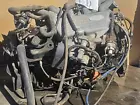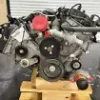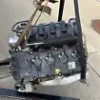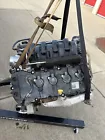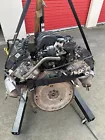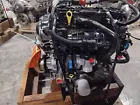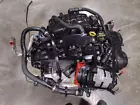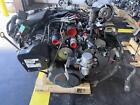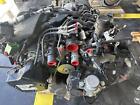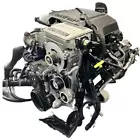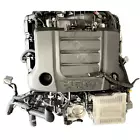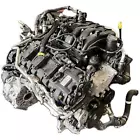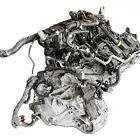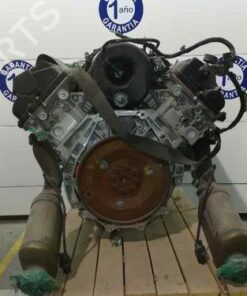The FORD F150 4.9L Motor: A Comprehensive Overview
Historical Background
The FORD F150 4.9L Motor, commonly referred to by its displacement in cubic inches — the 300 CID (cubic inch displacement) — is one of Ford’s most iconic engines. It made its debut in 1965 and saw use in a wide variety of Ford vehicles. However, it became most famous in the Ford F-Series trucks, especially the F-150, where it served as the base engine for many years — from the mid-1970s until 1996.
The 300 I6 engine was built to last. Ford originally designed it for use in trucks, vans, and industrial applications — a reflection of its torque-heavy performance and ruggedness. It found its way into everything from pickup trucks to delivery vans, even tractors and generators, all of which benefitted from its simplicity and durability.
By the time the last FORD F150 4.9L Motor rolled off the production line in 1996, the engine had earned a reputation as one of the most bulletproof powerplants Ford had ever built.
Technical Specifications
Let’s look at the core specs of the FORD F150 4.9L Motor:
| Specification | Detail |
|---|---|
| Engine Code | 300 CID (4.9L) |
| Configuration | Inline-6 (I6) |
| Bore x Stroke | 4.00 in × 3.98 in |
| Compression Ratio | ~8.8:1 (varies slightly by year) |
| Valvetrain | OHV (Overhead Valve), 2 valves per cylinder |
| Block Material | Cast Iron |
| Head Material | Cast Iron |
| Fuel System | Carbureted (1965–1986), EFI (1987–1996) |
| Ignition System | Mechanical → Duraspark → TFI |
| Max Horsepower | ~115–150 hp @ ~3,400–4,000 rpm |
| Max Torque | ~240–265 lb-ft @ ~2,000–2,400 rpm |
| Redline | ~4,000–4,500 rpm |
Design and Engineering
The 300 I6 engine was designed with durability and torque in mind. Unlike V8 engines, which prioritize horsepower and high RPMs, inline-six designs tend to offer smoother operation and better low-end torque. The FORD F150 4.9L Motor follows that tradition.
Key design elements:
Cast Iron Everything
The engine block and head are both made from cast iron. This makes the engine heavier, but also extremely durable. Cast iron can withstand high heat and pressure, which is essential for an engine meant to haul heavy loads.
Long Stroke
With a stroke nearly equal to its bore, this engine is “undersquare,” meaning it’s optimized for torque rather than high-revving power. That’s exactly what truck engines need.
Simplicity
The FORD F150 4.9L Motor is easy to work on. Whether you’re replacing spark plugs, adjusting the timing, or pulling the head, the engine layout is clear and logical. It’s also quite tolerant of neglect, which has made it a favorite among mechanics and enthusiasts alike.
Carbureted vs. Fuel Injected Versions
There are two main eras of the FORD F150 4.9L Motor:
1. Carbureted (1975–1986)
These engines used a single-barrel carburetor and were relatively low-tech. They required more frequent maintenance and tuning (especially with changing seasons), but were easier to modify in some ways due to their mechanical simplicity.
Pros:
-
Easy to repair
-
Fewer electronics
-
Good for simple, low-cost builds
Cons:
-
Less efficient
-
More emissions
-
Less power and consistency
2. EFI (1987–1996)
In 1987, Ford upgraded the FORD F150 4.9L Motor to electronic fuel injection (EFI) using a multi-port fuel injection system controlled by an EEC-IV ECU. This significantly improved reliability, emissions, cold-start performance, and fuel economy.
Pros:
-
Better fuel efficiency
-
Easier cold starts
-
Consistent power delivery
Cons:
-
More electronics
-
Harder to tune without proper tools
Performance Characteristics
Torque Monster
What sets the FORD F150 4.9L Motor apart from other engines in its class is its massive low-end torque. With most of its pulling power available below 2,500 RPM, this engine excels at:
-
Towing trailers
-
Hauling heavy loads
-
Climbing hills with minimal downshifting
Not a Speed Demon
With a redline around 4,500 RPM and max horsepower in the 115–150 hp range, this is not a racing engine. It’s not meant for drag strips or autocross — but it’ll pull a stump out of the ground without breaking a sweat.
Maintenance and Reliability
This is where the FORD F150 4.9L Motor really shines. It’s renowned for lasting 300,000+ miles with proper care.
Key Maintenance Items:
-
Oil changes every 3,000–5,000 miles
-
Valve cover gaskets (prone to leaking)
-
Rear main seal (common leak area)
-
Timing gears (replace after ~150k+ miles)
-
Regular ignition maintenance (plugs, wires, cap/rotor)
Durability Record
It’s not uncommon to find FORD F150 4.9L Motor-powered trucks with half a million miles — especially in fleet or farm use. With minimal electronics, a robust design, and a forgiving temperament, the engine became a legend for a reason.
Common Issues
Despite its stellar reputation, no engine is perfect. Here are common issues that crop up with age:
-
Exhaust Manifold Cracks
-
Due to heating and cooling cycles, the cast iron manifold can crack, especially in colder climates or with heavy use.
-
-
Oil Leaks
-
Rear main seal, valve cover gaskets, and pan gaskets are common leak points.
-
-
Distributor Wear
-
Especially in older models, the distributor gear or shaft can wear out, leading to timing issues.
-
-
Fuel Pump Failures (Pre-EFI)
-
Mechanical fuel pumps can wear out over time; EFI models use in-tank electric pumps.
-
-
Throttle Position Sensor / Idle Air Control Valve (EFI)
-
Common culprits for rough idle or stalling in EFI systems.
-
Popular Modifications & Upgrades
Many enthusiasts choose to keep the FORD F150 4.9L Motor stock for its reliability — but there’s a vibrant community of people modifying these engines. Here’s what you can do:
Performance Upgrades:
-
Header and exhaust system (significant gains in throttle response)
-
Intake manifold porting
-
Aftermarket camshaft (for mild performance gains)
-
Cold air intake
-
Ignition upgrades (HEI, MSD ignition, etc.)
-
EFI tuning (for 1987–1996 models)
Engine Swaps? Not Always Needed
Some people swap the FORD F150 4.9L Motor out for V8s like the 302 or 351 Windsor. But many keep the 4.9L because it’s more than capable for most driving, hauling, and even off-road applications.
Real-World Applications
This engine found homes in:
-
Ford F-150 (1975–1996)
-
Ford E-Series Vans
-
Ford Broncos
-
Ford F-250 / F-350 (early models)
-
Industrial equipment (pumps, welders, etc.)
-
Farm trucks & work vehicles — sometimes running decades past their expected lifespan
Why Enthusiasts Still Love the FORD F150 4.9L Motor
The FORD F150 4.9L Motor isn’t glamorous. It doesn’t roar like a big-block V8, it won’t win drag races, and it’s not packed with high-tech wizardry. But what it does offer is unmatched dependability, simplicity, and strength.
Whether you’re restoring a vintage F-150, building a budget off-roader, or just want a tough old truck that won’t leave you stranded — the FORD F150 4.9L Motor is a proven workhorse.
Conclusion: A Legend in Blue Collar Engineering
The FORD F150 4.9L Motor represents an era of automotive engineering where simplicity, reliability, and brute torque were the priorities. It’s an engine that’s earned its reputation not in magazines or race tracks, but in fields, construction sites, backroads, and garages across North America.


